With endless red sand dunes set against a brilliant blue sky, the Southern African nation of Namibia stirs the spirit and moves the heart. Namibia is so large and sparsely populated that it is possible to discover enormous open spaces without roads, towns, trees or even stones, just the lonely desert wind passing through one of the most enchanting corners of the earth. The otherworldly landscapes, the world’s oldest desert, wild coastlines littered with shipwreck remains and whale bones, and unusual desert-adapted flora and fauna will capture the imagination of even the most seasoned traveler. It may not offer the big game of the more verdant African countries, but you’ll still find plenty of big game here. On top of that, Namibia is also home to a number of ultraluxe lodges, attracting discerning travelers from all over the world.
Get the most out of your (luxury) trip to Namibia with my travel guide. Find out more about:
- Best time to visit
- How to get there
- Travel requirements
- Getting around
- Inspiration, highlights, & travel tips
- Suggested itineraries
- Recommended luxury hotels (+ reviews)
TRAVEL GUIDE TO NAMIBIA: BEST TIME TO VISIT
Enjoying a dry climate, Namibia is considered a year-round travel destination. However, deciding on the best travel period really depends on which regions and attractions you will be traveling to and what your interests are. For example, the dry months in Namibia are best for outdoor activities as well as wildlife viewing in places such as Etosha National Park, whereas the rainy summer months are best for birdwatching and low hotel rates.
- In general, the dry winter season from May to October is the most popular time for travelers to visit Namibia: the skies are clear, the risk of malaria is at its lowest, and the day time temperatures aren’t too hot (although nights between June and August in the desert are freezing cold). In wildlife reserves such as Etosha National Park, the combination of sparse foliage and the lack of rain forces the game to congregate around waterholes, making animal spotting particularly easy.
- November to March are the hottest months in Namibia and temperatures in some regions can reach above 50 C° (122 F°) during the day. These months are also considered to be the rainy summer season, although many areas in Namibia receive little or no rain at all. During the wetter months, some tracks in the north eastern part of the country (known as the Caprivi strip) can become unsurpassable. These are the hardest months for spotting wildlife in parks such as Etosha and they also carry the highest risk of malaria.
TRAVEL GUIDE TO NAMIBIA: HOW TO GET THERE
Most travelers arrive in Namibia via Hosea Kutako International Airport, the main gateway for all destinations in the country (located a 45 min drive from the capital Windhoek). Several major airlines offer direct flights to Windhoek, including Eurowings, Lufthansa, Qatar Airways and Ethiopian Airlines. Click here for a continuously updated list of airlines that offer direct flights to Kigali.
It’s also possible to arrive in Namibia overland as part of a multi-country itinerary. Namibia is bordered by Botswana to the east, Angola and Zambia to the north and South Africa to the south. While visiting Angola is not on the bucket list of many tourist (due to high crime and an unstable security situation), many travelers combine Namibia, South Africa, Botswana and Zambia in one single holiday (often starting at Cape Town in South Africa and ending at the Victoria Falls in Zambia or vice versa).
Before you buy a plane ticket, consider reading my tips & tricks for buying the cheapest plane ticket.
TRAVEL GUIDE TO NAMIBIA: ENTRY REQUIREMENTS
Requirements for entry into Namibia differ from country to country, and are subject to change. Prior to departure, always check with your government and your nearest Namibian embassy or consulate what documents you need for travel to Namibia. Some important points:
- You need a valid passport. The passport must be valid for six months after entry into the country. You need one blank page on your passport for entry stamps.
- Namibia introduced new immigration rules in 2016 relating to travel with children. In addition to valid passports, parents traveling with children (under 18) should at all times carry the original or certified copy of the unabridged birth certificate. The full unabridged birth certificate should list the child’s details and both parents’ details.
Make sure you read my 10 tips to plan a worry-free trip.
TRAVEL GUIDE TO NAMIBIA: GETTING AROUND
In order to reach most of Namibia’s National Parks, reserves and places of interest, you will need to rent a vehicle or charter a plane.
- The quickest and most comfortable way to get around in Namibia is by air travel. Dozens of minor airstrips cater for chartered plane and most of the isolated luxury lodges have their own landing strip. Flying will save you a lot of time. For example, getting from Sossusvlei to Damaraland will take two full days by car (with an overnight stop in Swakopmund) while it’s just two hours by plane. There are several good charter flight operators who regularly fly tourists between lodges, but it is best to ask the lodge(s) you’re staying at to advise on flights and book them for you, since many have agreements with particular charter operators. One example is Wilderness Safaris, which makes us of Wilderness Air (my experience with them was excellent).
- Most travelers will rent a car, which is the easiest and cheapest way of getting around the country. Namibia’s road network is comprised of high-quality tarred highways and secondary gravel roads. Although most road are generally navigable in a 2WD car, the majority of self-drive visitors rent a 4WD car: the higher clearance makes the ride more comfortable and 4WD cars are better equipped to tackle poor road conditions in the rainy season. Most lodges that demand 4WD access have a safe parking area for 2WD saloon cars, and will transfer guests in their own 4WD vehicles, usually at no extra cost. During my trip to Namibia, I rented a 4WD car from Asco Car Hire near Windhoek and was very happy with their service.
TRAVEL GUIDE TO NAMIBIA: INSPIRATION, HIGHLIGHTS & TRAVEL TIPS
There are many reasons why Namibia should be on your bucket list:
- Enjoying incredible views at the world’s 3rd largest canyon, the Fish River Canyon
- Visiting Kolfmanskop, a ghost town in the desert
- Spotting wildlife in Etosha National Park
- Exploring the dramatic scenery of Damaraland
- Climbing the dunes at Sossusvlei & Deadvlei
- Visiting the Skeleton Coast
- Soaring in a hot air balloon over the desert
The following, comprehensive articles may also inspire you and help you plan your holiday to Namibia:
- Top 10 best things to see & do in Namibia
- Top 10 best luxury hotels & lodges in Namibia
- Tips & tricks for getting the best deal at a luxury hotel
- Tips & tricks for buying the cheapest plane ticket
TRAVEL GUIDE TO NAMIBIA: SUGGESTED ITINERARIES
It’s impossible to suggest one itinerary for Namibia in this travel guide, but I hereby share with you a schedule based on my own holidays in Namibia, which is great if you want to see the country in a time frame of two weeks:
- Day 1 & 2: arrive at Windhoek & enjoy a classic African safari experience.
- Recommended hotel: Zannier Hotels Omaanda
- Day 3 & 4: drive (6 hours) or fly to the Namib Desert’s southern edge, and relax in otherworldly scenery.
- Recommended lodge: Zannier Hotels Sonop
- Day 5, 6, 7: drive (2 hours) to the Sesriem area, and explore the desert (including an excursion to Sossusvlei and a hot air balloon flight).
- Recommended hotels: &Beyond Sossusvlei Desert Lodge or Little Kulala by Wilderness Safaris
- Day 8, 9: drive (5 hours) to Swakopmund and explore the area (including a whale or kayak tour near Walvisbaai). Swakopmund mainly caters to travelers that love thrilling desert adventures but if that’s not your thing, I recommend to stay here for only one night (or even to skip Swakopmund by flying directly from Sossusvlei to Damaraland).
- Recommended hotels: Strand Hotel, Giardino Boutique Hotel
- Day 10, 11: drive (5 hours) or fly to Damaraland and explore the area (looking for desert adapted elephants and endangered black rhinos)
- Recommended hotels: Damaraland Camp by Wilderness Safaris
- Day 12, 13, 14: fly to Hoanib Skeleton Coast (40 min) for what will be the highlight of your trip, with safari drives in search of desert adapted lions and a drive/fly excursion to the mist shrouded coastline
- Recommended hotel: Hoanib Skeleton Coast by Wilderness Safaris
- Day 15, 16: drive (4 hours) or fly to Etosha National Park’s west side for game viewing
- Recommended hotel: Little Ongava
- Day 17, 18: drive (2 hours) to Etosha National Park’s east side for game viewing
- Recommended hotel: Onguma The Fort
- Day 19: drive (6 hours) or fly to Windhoek and return home
TRAVEL GUIDE TO NAMIBIA: RECOMMENDED HOTELS (+ REVIEWS)
I recommend to visit my top 10 list of the most fabulous hotels in Namibia if you are eager to know how I rank Namibia’s top hotels, based my own experience.
Below, you find my detailed reviews of hotels in Namibia (with pros, cons, & tips to save money per hotel).
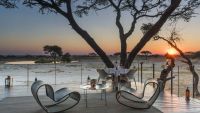 Review: Onguma The Fort, Etosha National Park (Namibia)
Review: Onguma The Fort, Etosha National Park (Namibia)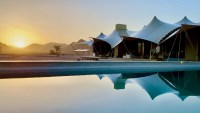 Review: Hoanib Skeleton Coast Camp (Namibia)
Review: Hoanib Skeleton Coast Camp (Namibia)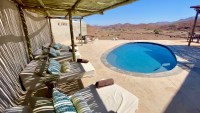 Review: Damaraland Camp by Wilderness Safaris (Namibia)
Review: Damaraland Camp by Wilderness Safaris (Namibia) Review: Giardino Boutique Hotel (Swakopmund, Namibia)
Review: Giardino Boutique Hotel (Swakopmund, Namibia)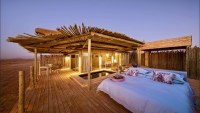 Review: Little Kulala Camp by Wilderness Safaris (Namibia)
Review: Little Kulala Camp by Wilderness Safaris (Namibia) Review: Zannier Hotels Omaanda (Namibia)
Review: Zannier Hotels Omaanda (Namibia)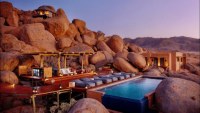 Review: Zannier Hotels Sonop (Namibia)
Review: Zannier Hotels Sonop (Namibia)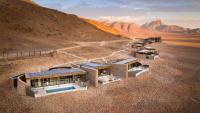 Review: &Beyond Sossusvlei Desert Lodge (Namibia)
Review: &Beyond Sossusvlei Desert Lodge (Namibia)
*** Follow me on Instagram, YouTube, Twitter, and Facebook for a daily moment of travel inspiration ***

Great content. Thanks for your post.
The sentence “Malaria at lowest” scared me!
As always, the most thorough lists and reviews I’ve read anywhere. Thank you for sharing your lux experiences with us in such detail.